Jessica Van Brummelen
Designing AI Learning Experiences for K-12: Emerging Works, Future Opportunities and a Design Framework
Sep 22, 2020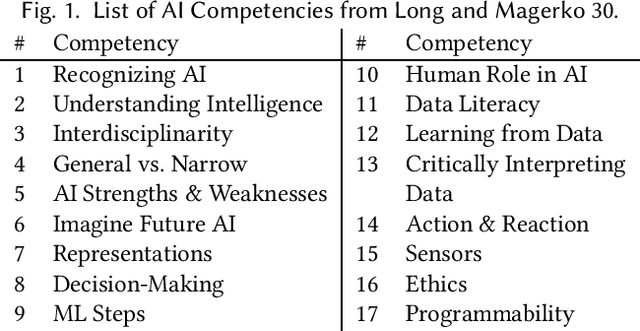
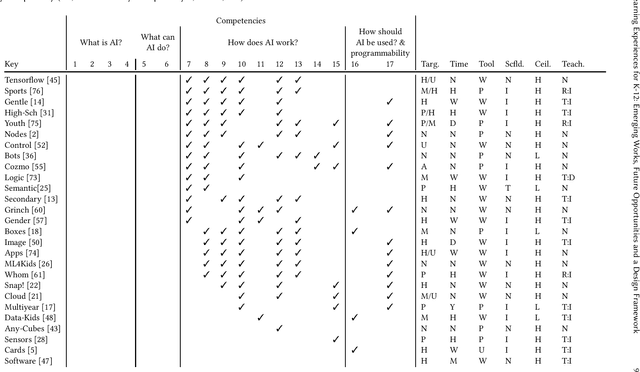
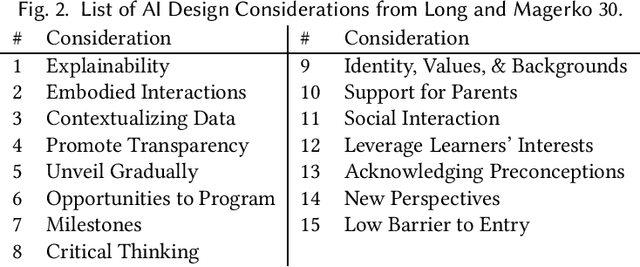

Abstract:Artificial intelligence (AI) literacy is a rapidly growing research area and a critical addition to K-12 education. However, support for designing tools and curriculum to teach K-12 AI literacy is still limited. There is a need for additional interdisciplinary human-computer interaction and education research investigating (1) how general AI literacy is currently implemented in learning experiences and (2) what additional guidelines are required to teach AI literacy in specifically K-12 learning contexts. In this paper, we analyze a collection of K-12 AI and education literature to show how core competencies of AI literacy are applied successfully and organize them into an educator-friendly chart to enable educators to efficiently find appropriate resources for their classrooms. We also identify future opportunities and K-12 specific design guidelines, which we synthesized into a conceptual framework to support researchers, designers, and educators in creating K-12 AI learning experiences.
Teaching Tech to Talk: K-12 Conversational Artificial Intelligence Literacy Curriculum and Development Tools
Sep 11, 2020



Abstract:With children talking to smart-speakers, smart-phones and even smart-microwaves daily, it is increasingly important to educate students on how these agents work-from underlying mechanisms to societal implications. Researchers are developing tools and curriculum to teach K-12 students broadly about artificial intelligence (AI); however, few studies have evaluated these tools with respect to AI-specific learning outcomes, and even fewer have addressed student learning about AI-based conversational agents. We evaluate our Conversational Agent Interface for MIT App Inventor and workshop curriculum with respect to eight AI competencies from the literature. Furthermore, we analyze teacher (n=9) and student (n=47) feedback from workshops with the interface and recommend that future work leverages design considerations from the literature to optimize engagement, collaborates with teachers, and addresses a range of student abilities through pacing and opportunities for extension. We found students struggled most with the concepts of AI ethics and learning, and recommend emphasizing these topics when teaching. The appendix, including a demo video, can be found here: https://gist.github.com/jessvb/1cd959e32415a6ad4389761c49b54bbf
Convo: What does conversational programming need? An exploration of machine learning interface design
Mar 03, 2020
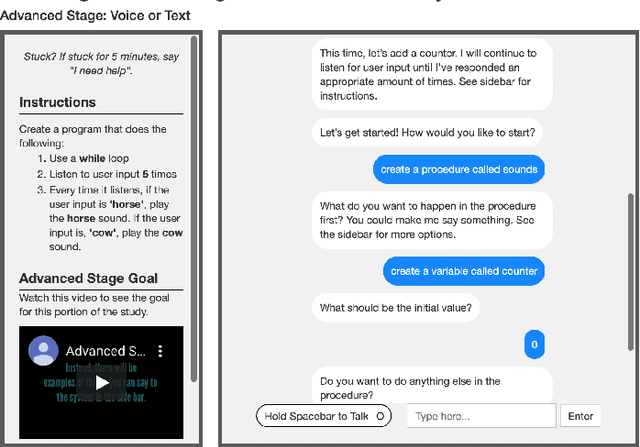
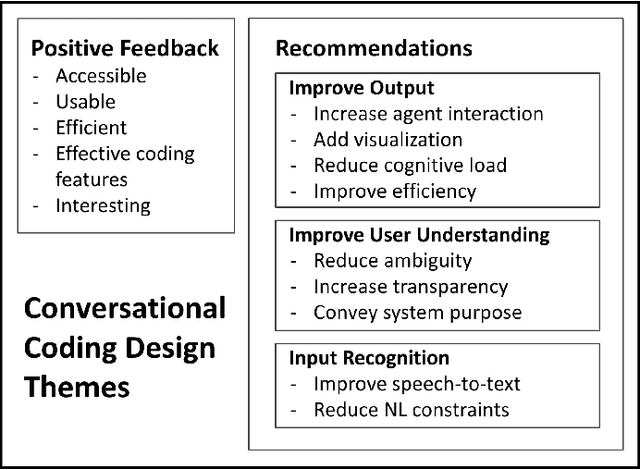
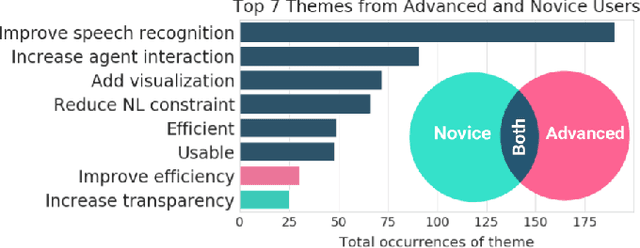
Abstract:Vast improvements in natural language understanding and speech recognition have paved the way for conversational interaction with computers. While conversational agents have often been used for short goal-oriented dialog, we know little about agents for developing computer programs. To explore the utility of natural language for programming, we conducted a study ($n$=45) comparing different input methods to a conversational programming system we developed. Participants completed novice and advanced tasks using voice-based, text-based, and voice-or-text-based systems. We found that users appreciated aspects of each system (e.g., voice-input efficiency, text-input precision) and that novice users were more optimistic about programming using voice-input than advanced users. Our results show that future conversational programming tools should be tailored to users' programming experience and allow users to choose their preferred input mode. To reduce cognitive load, future interfaces can incorporate visualizations and possess custom natural language understanding and speech recognition models for programming.
 Add to Chrome
Add to Chrome Add to Firefox
Add to Firefox Add to Edge
Add to Edge